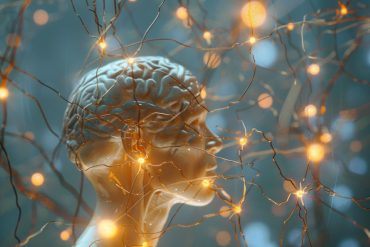Summary: A new artificial intelligence algorithm can accurately predict whether a person is infected with coronavirus based on a range of symptoms a person experiences. Researchers say the technology will help identify those with COVID-19 in populations that are experiencing limited clinical testing.
Source: King’s College London
Researchers at King’s College London, Massachusetts General Hospital and health science company ZOE have developed an artificial intelligence diagnostic that can predict whether someone is likely to have COVID-19 based on their symptoms. Their findings are published today in Nature Medicine.
The AI model uses data from the COVID Symptom Study app to predict COVID-19 infection, by comparing people’s symptoms and the results of traditional COVID tests. Researchers say this may provide help for populations where access to testing is limited. Two clinical trials in the UK and the US are due to start shortly.
More than 3.3 million people globally have downloaded the app and are using it to report daily on their health status, whether they feel well or have any new symptoms such as persistent cough, fever, fatigue and loss of taste or smell (anosmia).
In this study, the researchers analysed data gathered from just under 2.5 million people in the UK and US who had been regularly logging their health status in the app, around a third of whom had logged symptoms associated with COVID-19. Of these, 18,374 reported having had a test for coronavirus, with 7,178 people testing positive.
The research team investigated which symptoms known to be associated with COVID-19 were most likely to be associated with a positive test. They found a wide range of symptoms compared to cold and flu, and warn against focusing only on fever and cough. Indeed, they found loss of taste and smell (anosmia) was particularly striking, with two thirds of users testing positive for coronavirus infection reporting this symptom compared with just over a fifth of the participants who tested negative. The findings suggest that anosmia is a stronger predictor of COVID-19 than fever, supporting anecdotal reports of loss of smell and taste as a common symptom of the disease.
The researchers then created a mathematical model that predicted with nearly 80% accuracy whether an individual is likely to have COVID-19 based on their age, sex and a combination of four key symptoms: loss of smell or taste, severe or persistent cough, fatigue and skipping meals. Applying this model to the entire group of over 800,000 app users experiencing symptoms predicted that just under a fifth of those who were unwell (17.42%) were likely to have COVID-19 at that time.
Researchers suggest that combining this AI prediction with widespread adoption of the app could help to identify those who are likely to be infectious as soon as the earliest symptoms start to appear, focusing tracking and testing efforts where they are most needed.
Professor Tim Spector from King’s College London said: “Our results suggest that loss of taste or smell is a key early warning sign of COVID-19 infection and should be included in routine screening for the disease. We strongly urge governments and health authorities everywhere to make this information more widely known, and advise anyone experiencing sudden loss of smell or taste to assume that they are infected and follow local self-isolation guidelines.”
About this coronavirus and artificial intelligence research article
Source:
King’s College London
Media Contacts:
Tanya Wood – King’s College London
Image Source:
The image is in the public domain.
Original Research: Closed access
“Real-time tracking of self-reported symptoms to predict potential COVID-19”. by Cristina Menni, Ana M. Valdes, Maxim B. Freidin, Carole H. Sudre, Long H. Nguyen, David A. Drew, Sajaysurya Ganesh, Thomas Varsavsky, M. Jorge Cardoso, Julia S. El-Sayed Moustafa, Alessia Visconti, Pirro Hysi, Ruth C. E. Bowyer, Massimo Mangino, Mario Falchi, Jonathan Wolf, Sebastien Ourselin, Andrew T. Chan, Claire J. Steves & Tim D. Spector.
Nature Medicine doi:10.1038/s41591-020-0916-2
Abstract
Real-time tracking of self-reported symptoms to predict potential COVID-19
A total of 2,618,862 participants reported their potential symptoms of COVID-19 on a smartphone-based app. Among the 18,401 who had undergone a SARS-CoV-2 test, the proportion of participants who reported loss of smell and taste was higher in those with a positive test result (4,668 of 7,178 individuals; 65.03%) than in those with a negative test result (2,436 of 11,223 participants; 21.71%) (odds ratio = 6.74; 95% confidence interval = 6.31–7.21). A model combining symptoms to predict probable infection was applied to the data from all app users who reported symptoms (805,753) and predicted that 140,312 (17.42%) participants are likely to have COVID-19.
Feel Free To Share This COVID-19 News.







